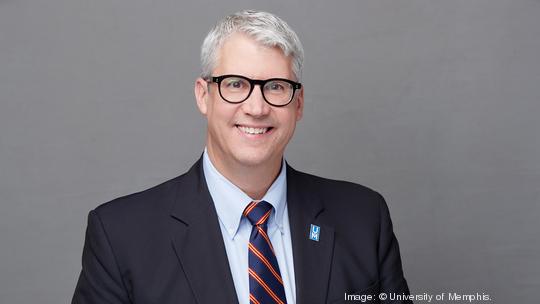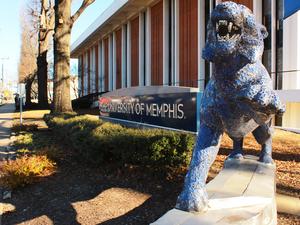
Annually, the average American eats over four pounds of shrimp, according to The New York Times.
Yet few of us realize that on the exoskeleton of these creatures — and some of their crustacean cousins — is a material called chitosan, which has an array of potential uses. And a University of Memphis biomedical engineering professor, Joel Bumgardner, Ph.D., believes it can help improve treatment for a widespread dental disease.
Nearly half of U.S. adults over 30 suffer from some form of periodontal disease, according to a CDC report; and in severe cases, it can lead to tooth and jawbone loss.
When this happens, fixing the problem can be challenging. While dental implants are effective, you need enough bone to hold them in place. So, if a patient has lost bone mass, you must regrow it through bone grafting, a common practice. Because gum tissue grows faster than bone, however, it can invade the bone’s space, slowing the growth.
Dentists do have a solution for this, called guided bone regeneration, which involves putting a barrier between the gum and the space where they’re regrowing the bone. But even here, problems can arise. Some of the materials used as barriers are nondegradable and require a second surgery to be removed. Though others are degradable, their degradation timeline can be unpredictable.
“If they degrade too earlier, or too quickly, you’re back to having the same scenario of having to try to do another intervention,” Bumgardner said.
And this is where chitosan — which can be found in not just shellfish but fungi and diatoms — comes in.
The material is degradable, and a polysaccharide — meaning, essentially, that it’s made up of sugar molecules. Bumgardner developed an interest in chitosan when he noticed its similarities to the polysaccharides that are naturally part of a human’s extracellular tissues. He was also impressed by its antimicrobial qualities.
Chitosan could, he thought, be a more suitable barrier for guided bone regeneration than the materials being used.
So, using electrospinning technology, he and his team have made nanofibers from chitosan, and he hopes that, eventually, the material could be used by dentists.
This isn’t likely to come anytime soon; Bumgardner said clinical use would be three-to-five years away if they started the FDA-approval process now. But they have made significant progress, after starting the research in 2012.
In 2021, his team secured a patent for a strategy that keeps the nanofibers intact once they’re in the mouth. They’ve partnered with dentists at the University of Tennessee Health Science Center (UTHSC), who have provided feedback and explained what their expectations for the material would be. They’ve done some small animal studies with rats — though not in their mouths — and intend to do larger animal studies with pigs.
They’re also in the thick of a five-year, $2 million grant from the National Institutes of Health (NIH) and will explore finding a partner company to help commercialize the product.
The periodontal treatment isn’t the only potential use for the nanofibers, either. For example, Bumgardner explained that they could potentially be used to help treat bone defects caused by automobile accidents and bone cancer.
And, through the entire development process, he’s encouraged by the fact that they’re using a renewable resource.
“Chitosan is derived, in large part, from the shellfish waste industry, and there’s a lot of shellfish waste out there,” he said. “And to find something we can reuse, with this environmental friendliness part to it, is also attractive."









